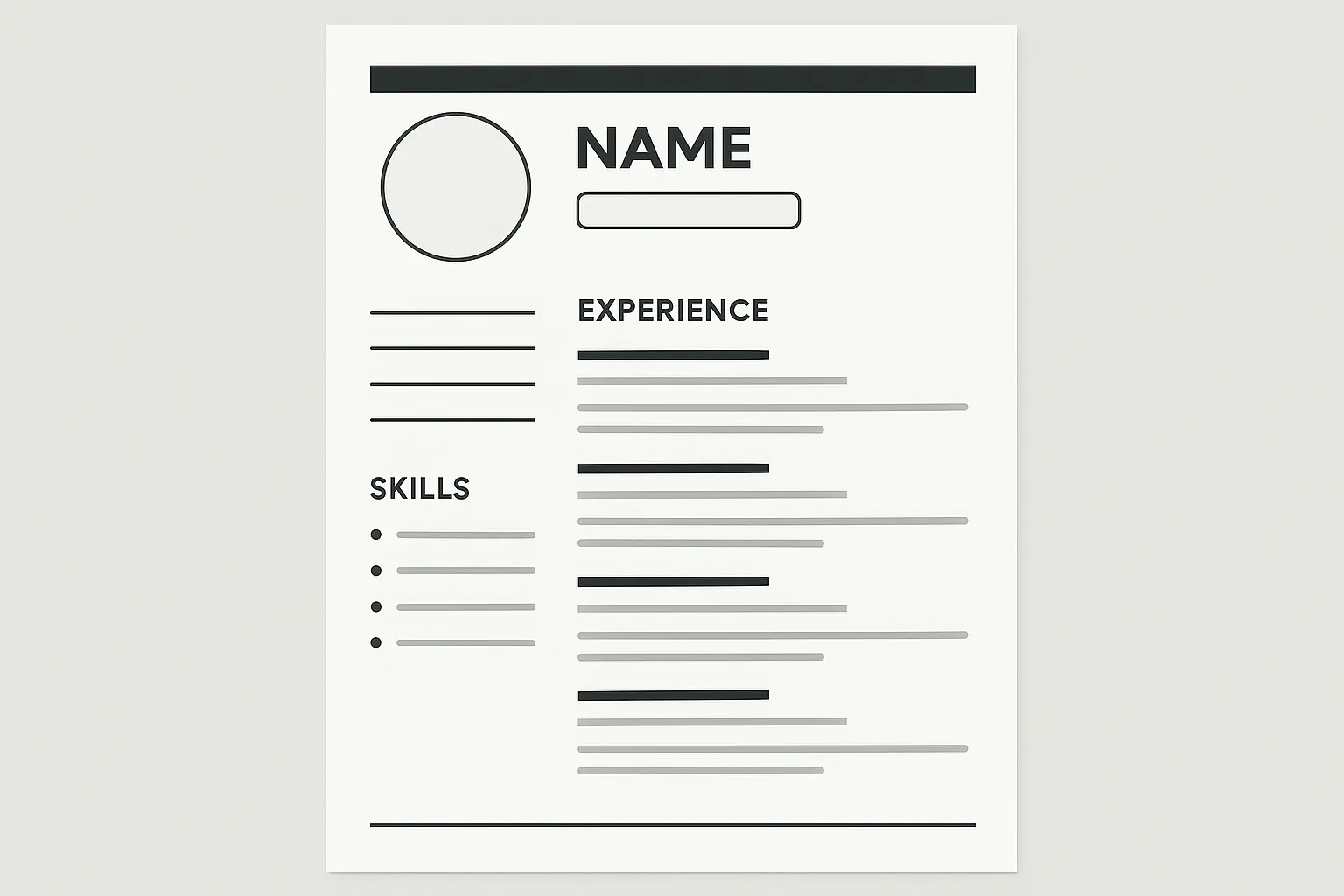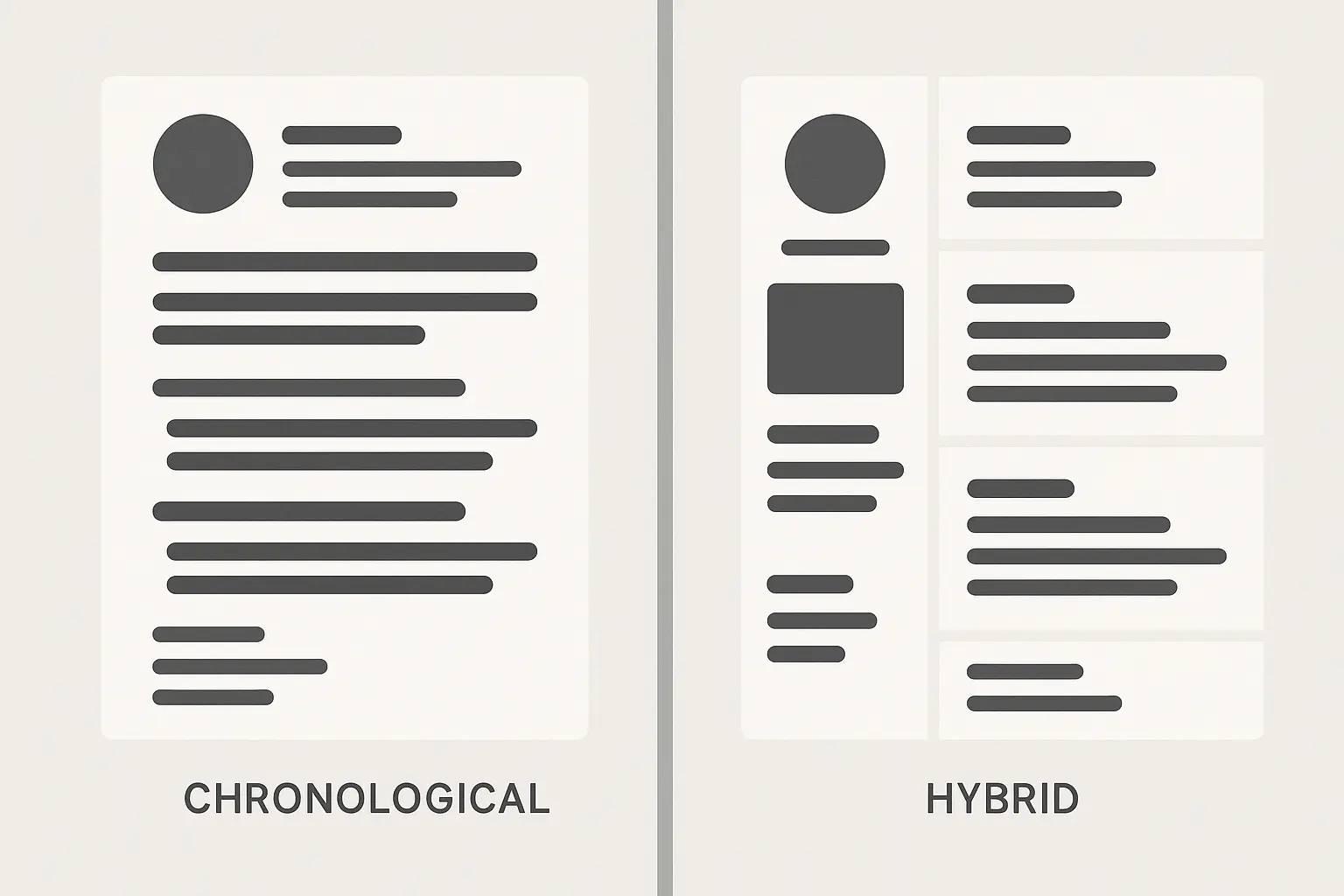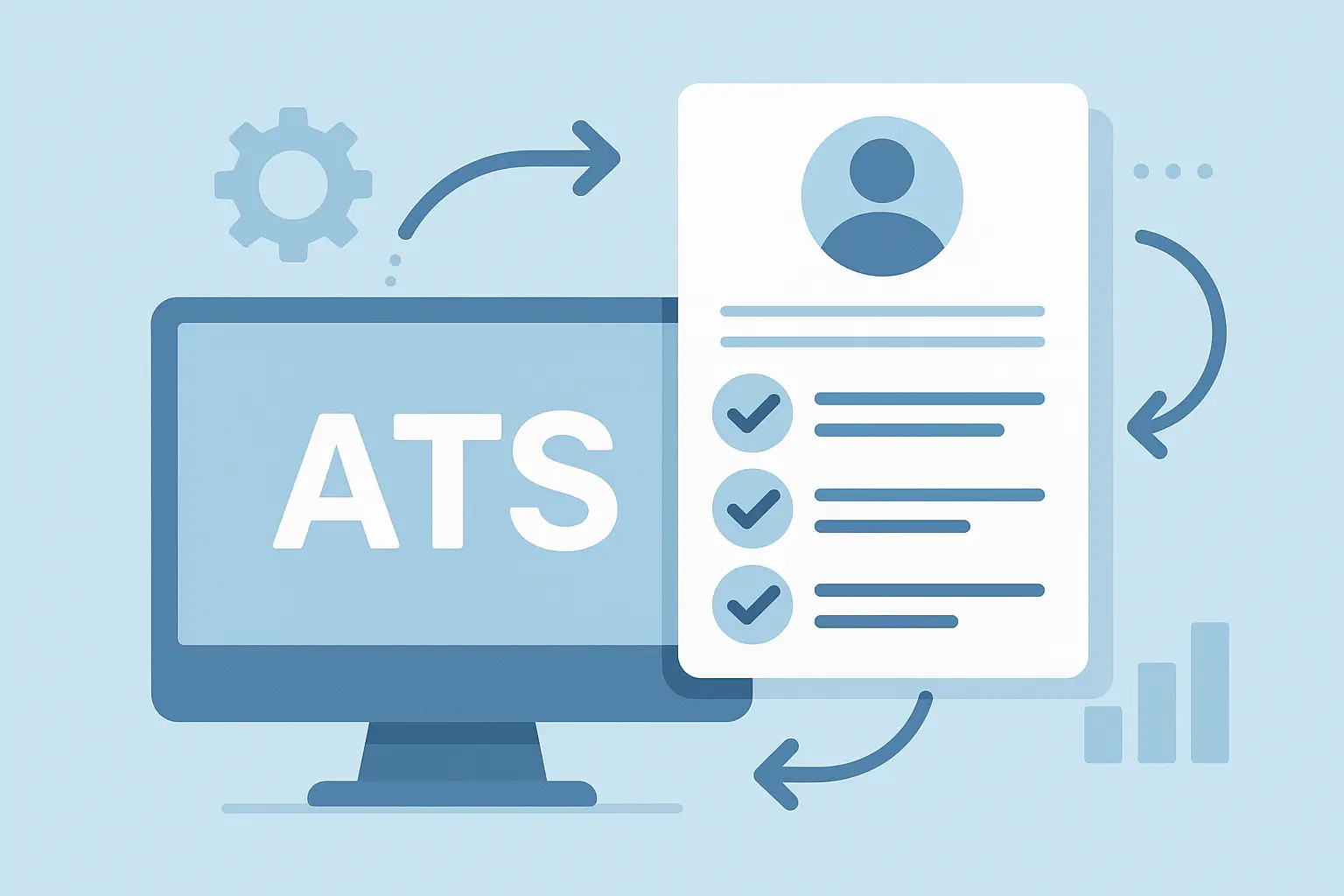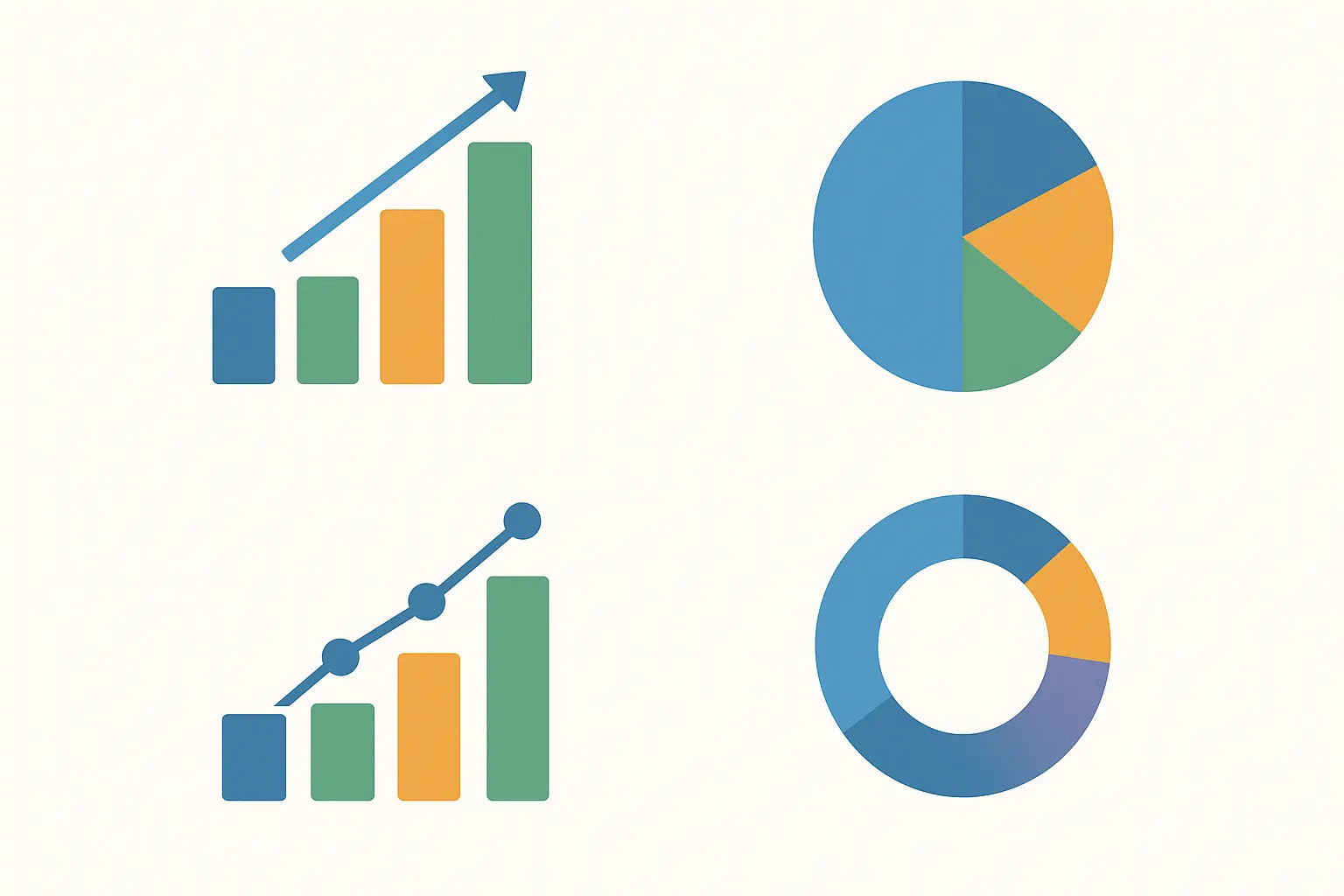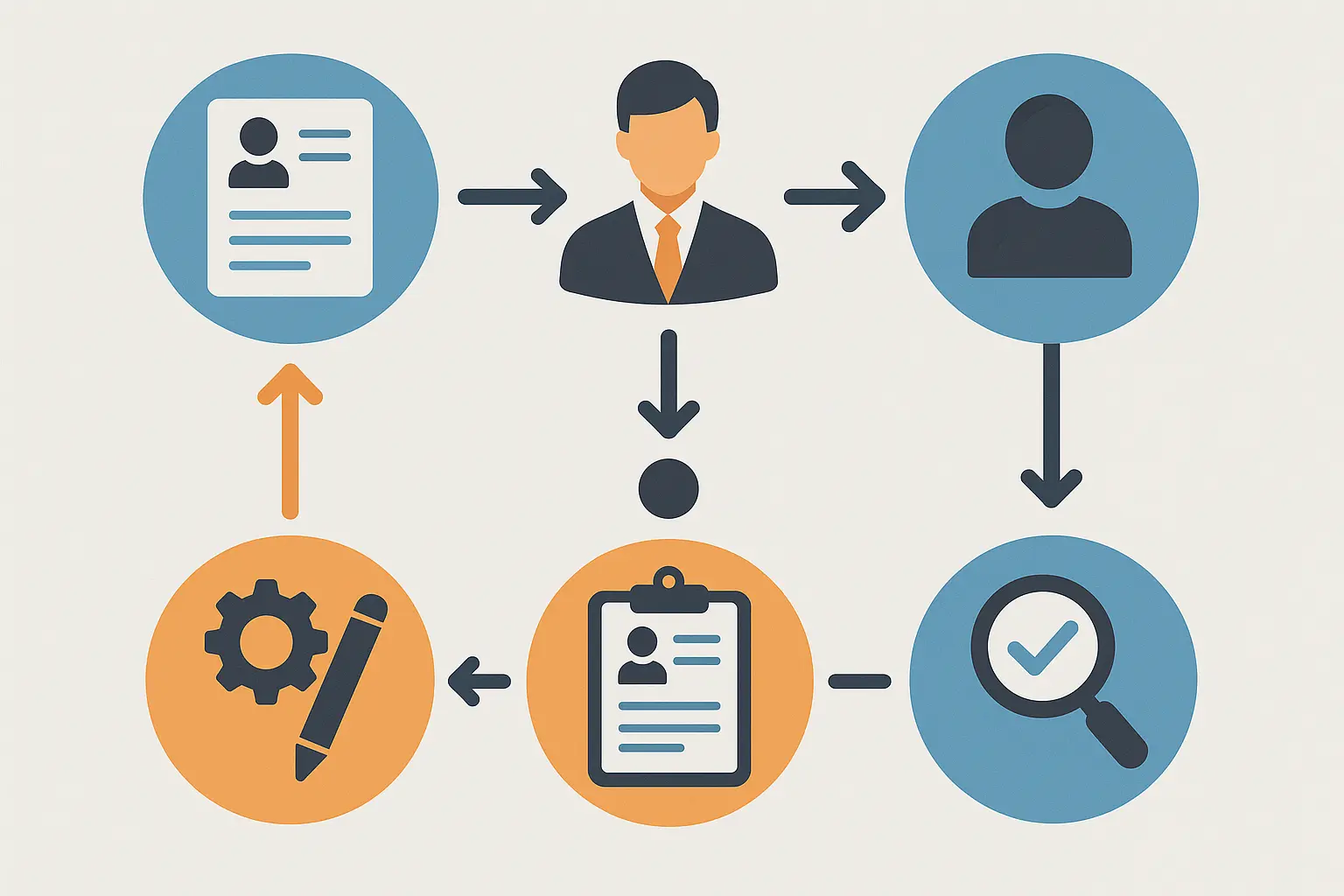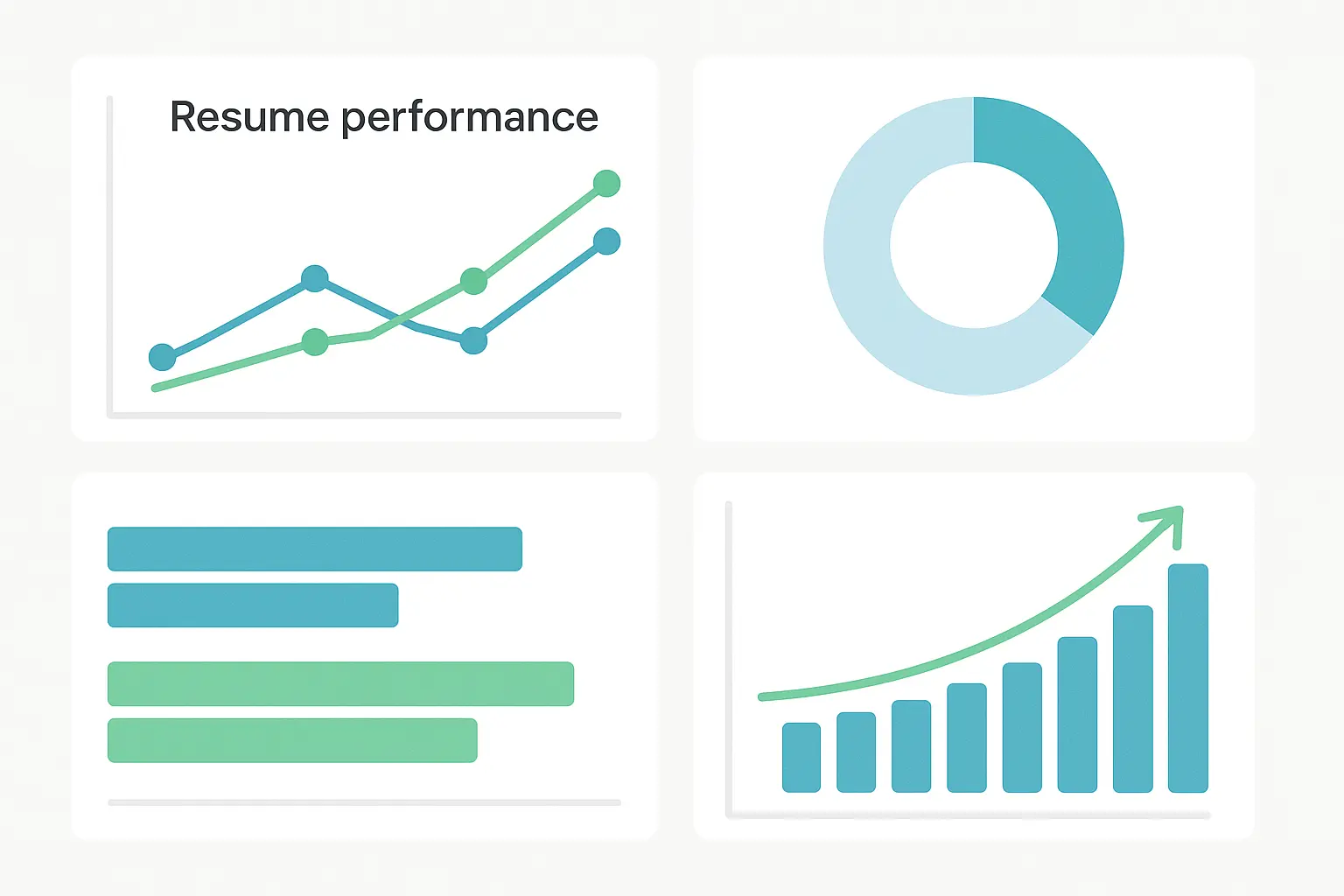The Hybrid Resume: Why It Might Be Perfect for Your Job Search
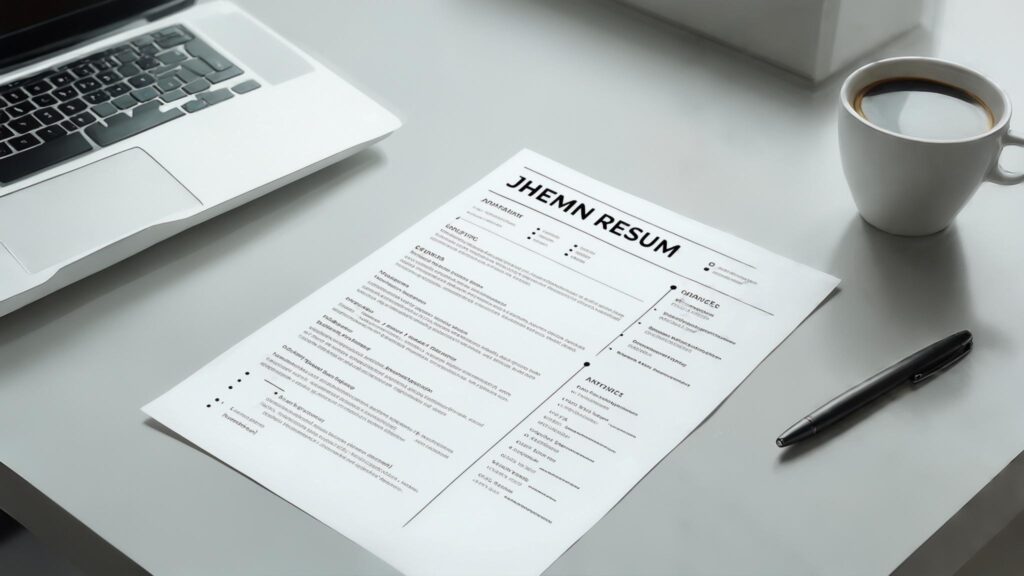
Look, I’m not going to promise you “secrets” or claim this format will magically land you a job. But after years of helping people with their resumes, I’ve noticed something: hybrid resume templates work really well for certain situations, and most people have no idea how to use them properly.
If you’re switching careers, returning to work after a break, or just tired of your experience getting lost in a sea of job titles that don’t quite match what you want to do next, this format might be exactly what you need.
With the Bureau of Labor Statistics projecting total employment to increase by 4.7 million between 2022 and 2032, competition for quality positions continues to intensify, making the right resume format more critical than ever. Understanding the fundamentals of professional resume format is essential before diving into hybrid template specifics, as it provides the foundation for making informed formatting decisions.
Table of Contents
-
What Actually Is a Hybrid Resume?
-
When This Format Makes Sense (And When It Doesn’t)
-
Finding Good Templates Without Breaking the Bank
-
Making Your Resume Work With ATS Systems
-
Customizing Templates to Reflect Your Brand
-
Implementation That Gets Results
-
Final Thoughts
TL;DR – What You Need to Know
-
Hybrid resume templates combine skills-first presentation with chronological work history – perfect for career changes and employment gaps
-
Google Docs offers surprisingly solid free resume templates with collaboration features
-
ATS compatibility isn’t rocket science – use standard headers and readable fonts
-
Your skills section should connect directly to achievements in your experience section
-
Industry expectations matter more than personal design preferences
-
Test your resume across devices and platforms before submitting
-
Track response rates to see what actually works
What Actually Is a Hybrid Resume?
Think of it as the best of both worlds. You get to put your most relevant skills right up front (like a functional resume), but you also show your work history in order (like a chronological resume).
It’s not just slapping a skills section on top of your regular resume. The magic happens when these two parts work together to tell a cohesive story about why you’re perfect for the job.
Here’s the basic structure that actually works:
-
Contact info and brief professional summary
-
Core skills/competencies (6-8 key ones)
-
Work experience (in reverse chronological order)
-
Education and additional sections
Why the Skills-First Approach Changes Everything
Leading with skills transforms how employers see you before they even look at job titles or company names. This is especially powerful when your most recent role doesn’t perfectly align with what you’re targeting.
Your skills section becomes a filter that helps hiring managers understand your value immediately. Instead of wondering “Can this person do the job?” they’re thinking “This person can definitely do the job – let me see how they’ve applied these skills.”
|
Resume Section |
Hybrid Format Priority |
Traditional Format Priority |
|---|---|---|
|
Contact Information |
1st |
1st |
|
Professional Summary |
2nd |
2nd |
|
Core Skills/Competencies |
3rd |
5th or 6th |
|
Work Experience |
4th |
3rd |
|
Education |
5th |
4th |
|
Additional Sections |
6th |
5th |
When This Format Makes Sense (And When It Doesn’t)
Hybrid resume templates aren’t right for everyone, despite what some career coaches claim. They work best when you need to redirect attention from potential red flags in your chronological history while still showing career progression.
Career Transition Success Stories
Switching industries or job functions? Hybrid formats let you emphasize transferable skills that might get buried in a traditional chronological resume.
Marketing professionals can successfully transition to project management roles by leading with skills such as “Cross-functional team leadership” and “Budget management” before showing their marketing job titles. The hybrid format makes the connection obvious.
Marketing to Project Management Transition Example:
-
Skills Section: Cross-functional Team Leadership, Budget Management, Stakeholder Communication, Process Optimization
-
Experience Section: Marketing Manager at TechCorp (2019-2023) – Led cross-functional product launch teams of 12+ members, managed $2M annual campaign budgets, coordinated with C-suite stakeholders on strategic initiatives
Handling Employment Gaps Strategically
Returning to work after time off doesn’t have to be a resume death sentence. Hybrid formats draw attention to maintained and developed skills rather than highlighting timeline gaps. The key is being strategic about which skills you emphasize and how you present any activities during your gap period.
For those considering alternatives, exploring functional resume template secrets can help you understand which format best serves your specific career situation.
When to Stick With Traditional Formats
If your career progression is linear and impressive within the same field, a chronological format might serve you better. Similarly, if you’re in a very traditional industry where hiring managers expect conventional resume formats, don’t rock the boat unnecessarily.
Finding Good Templates Without Breaking the Bank
You don’t need to spend money on resume templates to get professional results. Google Docs has stepped up their game significantly, and their templates aren’t fancy, but they work well and you can collaborate with others for feedback. Plus, they’re free and ATS-friendly.
Google Docs Templates That Actually Work
Google Docs gets unfairly dismissed as “basic,” but their template library has improved dramatically. More importantly, the platform offers features that traditional word processors can’t match.
The collaboration capabilities alone make resume templates for Google docs worth considering. Getting feedback from mentors or career counselors becomes seamless when you can share editing access. For detailed guidance on maximizing Google’s platform, check out our comprehensive Google Docs resume template guide that covers advanced formatting techniques and optimization strategies.
Multiple people can review and suggest changes simultaneously without version control nightmares. Comments and suggestions mode let reviewers provide feedback without permanently altering your document.
Template Evaluation That Prevents Problems
When evaluating any free resume templates, test them under real-world conditions:
-
Download and run through an ATS checker (several free options exist online)
-
Test on your phone – many recruiters review resumes on mobile first
-
Make sure it prints clearly in black and white
-
Check that you can customize it without breaking the formatting
Look for parsing errors, missing information, or formatting issues that could cause problems with standard section headers such as “Professional Experience” and “Core Competencies.”
|
Template Source |
Cost |
ATS Compatibility |
Customization Level |
Collaboration Features |
|---|---|---|---|---|
|
Google Docs |
Free |
High |
Medium |
Excellent |
|
Microsoft Word |
Subscription |
High |
High |
Good |
|
Canva |
Free/Premium |
Medium |
High |
Limited |
|
Resume.io |
Premium |
High |
Medium |
None |
|
Template.net |
Free/Premium |
Low |
Low |
None |
Making Your Resume Work With ATS Systems
Here’s the truth about Applicant Tracking Systems: they’re not as scary as everyone makes them out to be. Most modern ATS can handle hybrid resume templates just fine if you follow a few basic rules.
Recent analysis from “Resume Format for Freshers: What You Need to Know 2025” emphasizes that “many companies use Applicant Tracking Systems (ATS) to screen resumes” and recommends making sure to “use the relevant keywords from the job description to pass the ATS filters,” highlighting the continued importance of ATS optimization in 2025’s competitive job market.
ATS-Friendly Design That Works
Standard section headers and clean formatting are your friends. Use headers that ATS systems recognize: “Professional Experience,” “Core Competencies,” “Education,” and “Technical Skills.” Avoid creative alternatives such as “My Journey” or “What I Bring to the Table.”
Your hybrid structure can maintain its skills-first approach while using conventional header language that automated systems understand. Understanding ATS-friendly resume secrets becomes crucial when optimizing hybrid templates, as these systems require specific formatting considerations.
Keyword Integration That Feels Natural
Include keywords naturally in both your skills and experience sections. This dual placement reinforces your qualifications for both algorithms and human reviewers.
Natural Keyword Integration Example:
Instead of: “Skilled in project management, leadership, communication, teamwork”
Write: “Led cross-functional project teams of 8+ members using Agile methodology, resulting in 95% on-time delivery rate and improved stakeholder communication through weekly progress reports”
Don’t stuff keywords unnaturally – integrate them into meaningful descriptions of your actual experience and capabilities.
Testing Your Resume’s Performance
Test your hybrid resume on different job boards, company websites, and ATS systems to identify potential formatting issues. LinkedIn’s resume upload feature provides a good baseline test – if your formatting survives LinkedIn’s processing, it’ll likely work in most other systems.
Keep a simple text version of your resume content as backup for systems that completely strip formatting. You can copy and paste from this version when needed.
Customizing Templates to Reflect Your Brand
Your resume should feel like you, not like a template everyone else is using. But “personal” doesn’t mean “unprofessional.” Professional resume templates succeed because they prioritize readability and information hierarchy over flashy graphics.
Making Templates Work for Your Industry
Conservative fields like finance and law need clean, traditional layouts. Think navy accents at most, standard fonts, and conventional section order. Creative fields give you more room to play, but remember – creative doesn’t mean unprofessional.
Tech companies expect modern, clean designs. Use current fonts and strategic color, but keep it scannable. Include dedicated sections for technical skills and certifications that recruiters can find quickly.
Selecting the right resume fonts is crucial for professional presentation, as typography choices significantly impact readability and first impressions.
The Customization Process That Actually Works
Don’t just change the colors and call it personalized. Start by copying any template before you modify it – you’ll thank me later when you need to start over.
Replace content systematically: contact info first, then skills, then experience. Keep the original structure until all your content is in place, then make design tweaks.
Test everything. Export as both PDF and Word formats. Check how it looks on different devices. Print a copy even if you plan to submit digitally – some hiring managers still prefer paper during interviews.
Content Strategy That Reinforces Your Message
Every piece of information should serve a purpose in supporting your candidacy. List 6-8 core competencies that directly align with your target role requirements. These should be substantiated by specific examples in your experience section.
Create reinforcement between your functional and chronological elements – if you claim a skill in your summary, prove it with specific achievements in your experience section.
Use specific metrics and numbers throughout your experience section to demonstrate impact. Quantify results whenever possible: “Increased sales by 23%” is more compelling than “Improved sales performance.”
Managing Multiple Versions Without Losing Your Mind
You’ll probably need different versions for different types of jobs. Keep a master version with all your possible skills and achievements, then create targeted versions that emphasize what’s most relevant.
Learning how to update your resume the smart way helps maintain consistency across multiple versions while ensuring each variant remains current and targeted.
For example, if you’re targeting both tech and healthcare roles, your core experience stays the same, but your skills section shifts focus:
-
Tech version: “Data Analysis,” “Process Automation,” “Cross-functional Collaboration”
-
Healthcare version: “Regulatory Compliance,” “Quality
-
Healthcare version: “Regulatory Compliance,” “Quality Assurance,” “Patient Safety Protocols”
Implementation That Gets Results
Creating a great hybrid resume template is only half the battle – implementing it effectively determines whether you get interviews or join the rejection pile.
As highlighted in recent career advice from “What CV Format Do Recruiters Like Best”, the combination (hybrid) format is increasingly favored by recruiters because it “showcases strengths and experience” while providing the “flexibility” to adapt to different industries and career stages.
Quality Control Before You Hit Send
Here’s your pre-submission checklist:
-
Does it display correctly on mobile?
-
Can you read everything when printed in black and white?
-
Are all your contact details accurate?
-
Do your skills connect to specific examples in your experience?
-
Is the file size under 2MB?
-
No orphaned headers or awkward page breaks?
-
All fonts render properly in PDF format?
Small formatting problems can create big perception issues, especially when hiring managers are looking for reasons to narrow down large applicant pools.
Tracking What Actually Works
Keep a simple spreadsheet of which resume version you used for each application and what happened. You’ll start seeing patterns quickly – maybe your healthcare-focused version gets more responses, or certain skills combinations work better.
Don’t just guess at what’s working. Track your response rates and adjust based on real data, not assumptions. Data-driven optimization beats guesswork every time when it comes to resume effectiveness.
When you receive feedback from recruiters or hiring managers, systematically incorporate relevant suggestions while maintaining your hybrid structure’s advantages. Not all feedback is worth implementing, but consistent themes across multiple sources usually indicate areas for improvement.
The Follow-Up Reality
Your hybrid resume is just step one. Even perfect formatting won’t overcome irrelevant experience or poor job targeting. Make sure you’re applying for roles where you’re actually qualified, not just roles you want.
When you do get feedback from recruiters or hiring managers, pay attention to consistent themes. If multiple people mention the same issue, it’s probably worth addressing.
Keeping It Current
Set a quarterly reminder to update your resume, even when you’re not job searching. Add new achievements, refresh outdated skills, and remove older experience that’s no longer relevant. It’s much easier to maintain than to completely overhaul when you suddenly need it.
Schedule regular reviews to ensure your hybrid resume template remains current and competitive in evolving job markets. This proactive approach makes future job searches much smoother and less stressful.
Resume Builder IQ’s comprehensive platform specifically addresses the complex challenges of hybrid resume optimization that free resume templates and manual processes can’t handle effectively. The platform’s AI-powered precision automatically balances the dual nature of hybrid formats by ensuring your skills summary aligns perfectly with your experience details while incorporating job-specific keywords naturally throughout both sections.
The comprehensive support system includes integrated cover letter creation that matches your hybrid resume’s formatting and messaging, ensuring consistent personal branding across all application materials. This eliminates the common problem of mismatched documents that can undermine your professional presentation.
Most significantly, Resume Builder IQ’s AI-driven suggestions continuously optimize your hybrid resume’s performance by analyzing successful patterns across similar roles and industries, providing insights that manual template customization simply cannot achieve.
Ready to create a hybrid resume that actually gets results? Try Resume Builder IQ’s free trial and see how AI-powered optimization can transform your job search success.
Final Thoughts
The hybrid format gives you flexibility in how you tell your professional story. Use that flexibility strategically, focus on what employers actually need, and you’ll see better results from your applications.
Remember: there’s no perfect resume format that works for everyone. Hybrid resume templates work well for specific situations, but they’re not magic. Combined with relevant experience, targeted applications, and professional follow-up, they can be a powerful tool in your job search toolkit.
Creating an effective hybrid resume isn’t about following a rigid formula – it’s about understanding how to balance skills presentation with chronological experience in a way that tells your unique professional story. The hybrid format works because it solves real problems that other resume formats can’t address.
Whether you’re changing careers, returning to work, or simply want to lead with your strongest qualifications, the hybrid approach gives you flexibility without sacrificing professionalism. Focus on creating a document that accurately represents your capabilities while positioning you as the solution to employers’ problems.
Start with the fundamentals – clear structure, relevant content, and professional presentation. Then optimize based on actual results rather than assumptions about what might work. Your hybrid resume should evolve as you gather data about what resonates with your target market.
The free resume template options available today provide excellent starting points, but success comes from thoughtful customization and strategic implementation. Take the time to understand your industry’s expectations, test your resume across different platforms, and track your results consistently.

